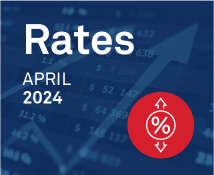U.S. Treasury market volatility declined in March, with the MOVE Index monthly average at 98.63, 35% below its March 2023 value. The last two days of March saw the volatility metric hit its lowest level since February of 2022, right as the Fed started its rate-rising campaign. And while volatility has returned in the first few days of the second quarter, it remains near a two-year low point (but more than double post-pandemic lows).
The slight volatility pullback did not dampen Treasury volumes, however. The $829 billion traded per day was only 4% below the volume in March of last year—a month in which SVB’s collapse created the heaviest trading day ever for U.S. Treasuries ($1.49 billion). Further, the ADNV in Q1 was $879 billion—a new record.
Conversely, derivatives volumes were down month over month in March and year over year. Year-over-year ADNVs in Treasury futures, SOFR futures and USD interest-rate swaps dropped 17%, 38% and 20%, respectively. This brought the cash-to-futures ratio down in Q1, putting it back in line with Q1 2023, although still above historic norms. Both lower volatility and the assumption held by most that interest rates can only go in one direction could reduce the need to trade derivatives for some.
MethodologyCoalition Greenwich continuously gathers data and insights from U.S. Treasury market participants, including asset managers, hedge funds, primary dealers, market makers, and trading platforms. The data, once aggregated, normalized and enhanced, is analyzed by our market structure research team who identify key areas of change and the likely direction of volume, holdings, market share, and other trends in the coming months.

